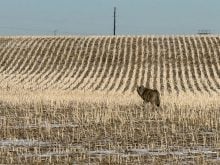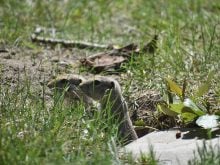University of Saskatchewan students will take their books to the pig barn in the new year to help researchers find ways to cope with dusty air.
Ninety volunteers are expected to sit in the barn for five hours passing the time reading, working through crossword puzzles and sometimes riding a stationary bike to simulate work, said study co-ordinator Liliane Chenard of the Institute of Agriculture, Rural and Environmental Health.
It is part of a series of university studies examining the effects of the high concentration of dust in swine barns on the lungs of workers.
Read Also

Agritechnica Day 3: Hybrid drive for a combine, data standards keep up to tech change and tractors of the year
Agritechnica 2025 Day 3: Hybrid drive for a combine, data standards keep up to tech change and tractors of the year.
Half the volunteers were selected
after DNA testing showed they have genes that help protect them against the negative effects of dust and toxins. The remainder do not have such a gene.
“Previous studies have shown some people will react less to dust,” she said, noting that 10 percent of the general population has this protective gene.
Chenard said the students will undergo a number of pulmonary and blood tests before, during and following the barn exposure.
Students with asthma or allergies will not be used in the study, said Chenard, who did not expect the five-hour stint to cause any health concerns for the students.
The experiments will take place at the Prairie Swine Centre barns outside Saskatoon and are expected to conclude in March.














